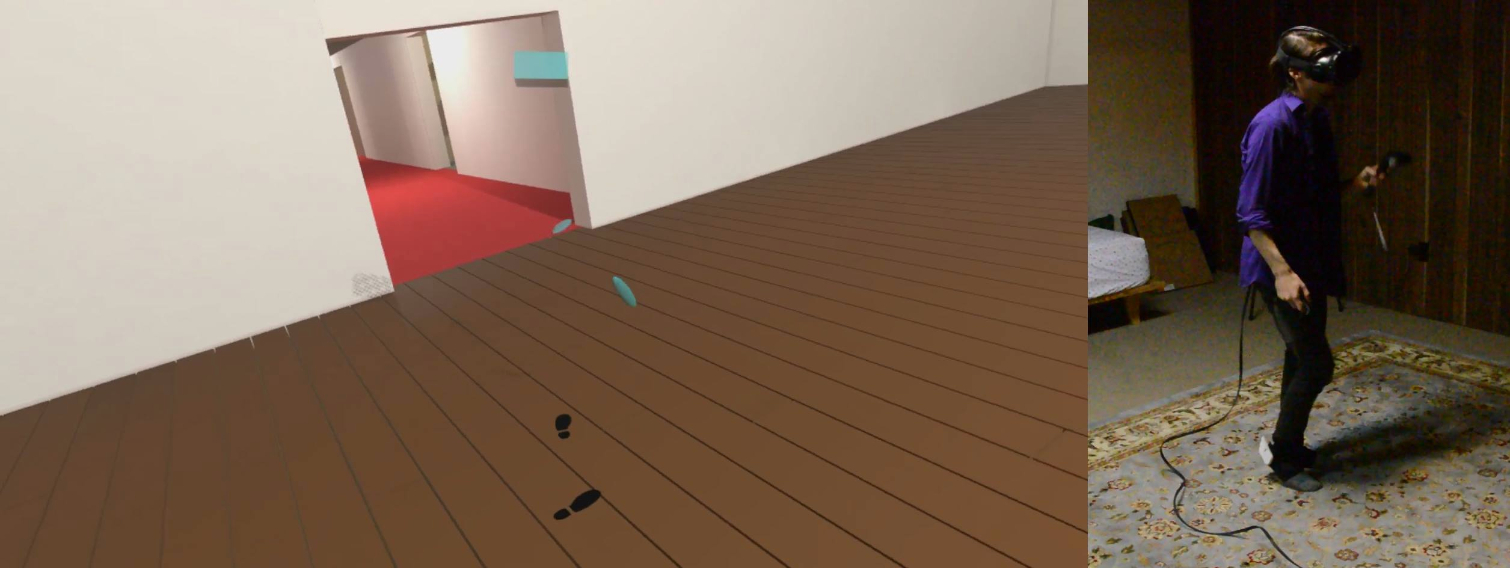Talaria VR Offers Wearable Solution For Long-Distance VR Locomotion
Virtual reality hardware is now on the market, but we’re a long way from figuring out all of the problems that arise from developing compatible games and experiences. Comfortable locomotion might be the most prominent of those problems.
Motion sickness in VR (aka "VR sickness") is commonplace when you adapt traditional gaming mechanics, such as the use of a joystick for directional input. There are several software options that can make long distance movement more comfortable, such as Cloudhead Games’ Blink and comfort mode systems, and there are hardware solutions, such as the Virtuix Omni, but Talaria VR believes it has a better option.
The Talaria VR locomotion wearable is designed to be strapped to your foot, which is similar to how the Omni tracks your movement. Unlike the Omni, Talaria VR’s system doesn’t require a base platform or harnesses. Talaria VR keeps track of your footsteps with inertial and pressure sensors that you strap to your feet.
The wearable is designed to complement an HTC Vive room-scale VR setup. It doesn’t restrict your movement in any way. In fact, Talaria VR said the device has been designed to support walking, running, skipping, jumping, crouching and ducking. Talaria VR will let you navigate around obstacles to take cover. You’ll be able to run-and-gun, duck for cover, and otherwise move further than a standard room-scale setup will allow and in a less restrictive manner than a VR treadmill will allow.
Talaria VR has multiple different movement options. You can set it up so that you can move freely within your room-scale space until you click a button on your controller to enable Talaria’s locomotion system. You can also set it up so that Talaria kicks in when you reach the bounds of your play space.
Talaria allows you to continue moving through the VR experience by running in place. Peter Hollander, one of the developers working on the Talaria hardware, explained that this motion helps counter the feeling of motion sickness because you are still using your own legs to move so your brain accepts directional movement. Talaria has additional modes that help counteract VR sickness. You can enable a third-person mode that you still control by walking in place. This leaves the camera position stationary while you watch a ghostly avatar of yourself navigate the game. Hollander recommended this mode for most people, because there currently isn’t a function to help your vestibular system balance while the camera is moving.
Talaria VR has other functions beyond tracking your movement. With tracked feet, game developers can implement features such as leaving behind footprints where you stepped or attaching ragdoll animations to footsteps to help cast accurate shadows. Knowing when you step on the ground means that games can have audio cues that react to your real footsteps, and because the trackers have pressure sensors, those sounds can be different based on how hard you stomp on the ground.
Get Tom's Hardware's best news and in-depth reviews, straight to your inbox.
Talaria VR hasn’t announced when the hardware will be available. The video features a prototype iteration of the trackers, and the company said things are subject to change. Talaria is welcoming developer interest, though, so if you would like to learn more about supporting the project you can reach out to devs@talariavr.com.
We’ve reached out to Talaria VR for more details about the hardware and to inquire about the planned release date.
Kevin Carbotte is a contributing writer for Tom's Hardware who primarily covers VR and AR hardware. He has been writing for us for more than four years.
-
uglyduckling81 Hmm not bad. My only concern with this type of add on is so few people will actually have it that no developer will actually code for it. So the creators of the hardware need to be able to control movement somehow which seems unlikely. For instance if the game is written to movement outside the room scale is controlled by teleporting from spot to spot how are these guys going to change that?Reply -
PeterSHollander Reply18429883 said:Hmm not bad. My only concern with this type of add on is so few people will actually have it that no developer will actually code for it. So the creators of the hardware need to be able to control movement somehow which seems unlikely. For instance if the game is written to movement outside the room scale is controlled by teleporting from spot to spot how are these guys going to change that?
Talaria can operate in a basic mode where it simply outputs movement data as a universal gamepad, something that many experiences already implement. Alternatively, if a developer wishes to include full integration of Talaria locomotion, it's a simple drag-and-drop asset into their engine of choice. Regarding accomodations for teleportation-enabled experiences, we are in the process of experimenting with various solutions. -
PeterSHollander Reply18432353 said:seriously, puke fest
While first-person movement using Talaria can induce discomfort in sensitive individuals, third-person navigation is a gauranteed comfortable experience, and still maintains continuity and pacing. -
TeamColeINC Reminds me of the floor mat peripheral that came with Track & Field for NES lol. That was a good and fun workout.Reply -
PeterSHollander Reply18435247 said:Great choices for locomotion. Any estimates on price and availability for purchase?
Too early to say, but accessibility is a priority for us; and manufacturing something that is cost-prohibitive is not accessible :)
Will release updates via our website and social media when we start to lock down some more solid information.
